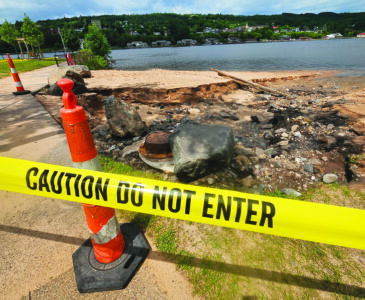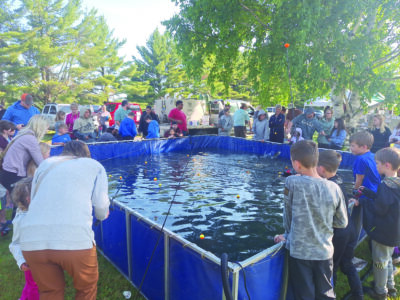Tech scientist wins award from president
HOUGHTON – When Colleen Mouw heard she’d been nominated by NASA for a prestigious award last year, she was both honored and shocked.
“I guess you don’t ever think that what you’re doing is important,” said Colleen Mouw, an assistant professor in the department of geological and mining engineering at Michigan Technological University. “You’re just trying to keep your job and do your best at it.”
The news she got in February couldn’t have been further from a pink slip. President Barack Obama named Mouw one of 106 researchers in the country to receive Presidential Early Career Awards for Scientists and Engineers. The award is the government’s highest for science and engineering professionals beginning independent research.
Mouw’s work uses optical satellite imaging data to study phytoplankton. The single-celled organisms make about about 1 percent of the planet’s biomass, but make half of its oxygen.
Just as an eye distinguishes between water looking green, blue or brown, a satellite looks at the light leaving the water and its spectral signatures.
Along with phytoplankton, that color is determined by minerals, detritus and colored dissolved organic material (“the teabag effect,” Mouw said).
By analyzing those variations over time, Mouw can find out what types of carbon are in the system, and the amount and kinds of phytoplankton.
“I’m often pairing this data with other observations – temperature, for example – to know the physics of the lake, how the water is moving around, how the phytoplankton are responding to that physical environment in which they’re living,” she said.
The satellite record of aquatic color imagery dates back to 1997. Since then, there have been a number of studies globally and regionally with variable results. With warmer oceans, stratification becomes stronger and phytoplankton cells become smaller.
As the bottom of the food web, phytoplankton becoming smaller would have reverberations up the chain, from zooplankton to fish. Smaller cells also absorb less carbon.
“If you’re changing the size distribution, you’re going to change the role that phytoplankton have in sequestering carbon long-term in the ocean,” Mouw said.
Mouw plans to continue her projects. She also hopes to study how phytoplankton respond to variable ice.
“Trying to get winter observations is a big challenge, so it’s thinking about ways we can get the optical observations that we need in the wintertime, to know how the lake is responding, when we’re essentially blind otherwise,” she said.





